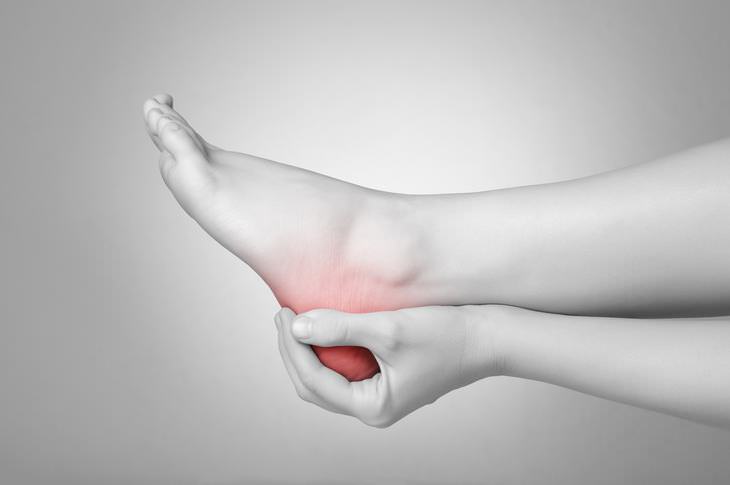All You Need to Know About Plantar Fasciitis

Natural remedies and improve plantar fasciitis. 4 secrets to curing plantar fasciitis.
Number 1-Doing deep tissue work on the area. You can either hire a massage therapist or the cheapest and most effective way to do it is either get a tennis ball at home, or my favorite is a rolling pin, and put this right under your feet. You can do this wearing a socks and rolling on the pin for 2-3 minutes in the beginning, which stretches the tendon.
When you’ve plantar fasciitis, tendon and fascia becomes very, very tight and it starts to stretch out, just like if you pulled a muscle on your low back or on your neck. Getting deep tissue massage breaks up the scar tissue, relaxes the muscles. So going back and forth about 2 minutes at a time, really just kind of getting in that one little area like so. Do this twice 2 to 3 times a day for about 2-5 minutes. Work your way up to 5 minutes.
Number 2- stretching. Best to get a block or a set of stairs, is the easiest way to do this. A set of stairs, helps lean up against that part of the foot, so doing deep stretching of that plantar tendon.
Number 3- nutritional foods and supplements that can cure plantar fasciitis. This is very important in getting certain nutrients in your body that help relax tendons. 1st is getting magnesium- 500 mg a day. Take it right before going to bed. It relaxes that muscle. It is the number 1 nutrient for healing plantar fasciitis.
Along with magnesium, have vitamin B 5- it helps to relax the muscles, help heal the plantar tendon.
Next is fish oi or more omega 3s in your diet can also help heal that area.
Vitamin C can also help with the absorption of B%, another good thing to have.
Make sure that you’re following an anti-inflammatory diet. Getting those supplements will help relax that plantar tendon.
Number 4- strengthening the muscles of your feet. One of the main cause of plantar fasciitis is actually not wearing the right type of shoes and having a weak foot muscles.
Our bodies were meant to be moving barefoot. That’s our original design, walking barefoot, where a lot of these shoes today cause us to compensate and only use certain areas of our foot, and so actually most of our feet muscles get weak. Walking barefoot or switching over to barefoot shoes, these are the original Vibram shoes- barefoot shoes. They actually strengthen your tendon.
Wearing barefoot shoes strengthens calf muscles. It will help strengthen on of those many, many little muscles within your feet. It’s going to help raise you arch. So, that’s actually going to help strengthen your foot, long-term help improve your plantar fasciitis. And by the way, slow into this when you’re wearing barefoot shoes. It’s recommended just starting off 1 hour, maybe even 30 minutes during the day. Over time, kind of work your way up.
If you do the things mentioned above, you’re going to relieve plantar fasciitis.